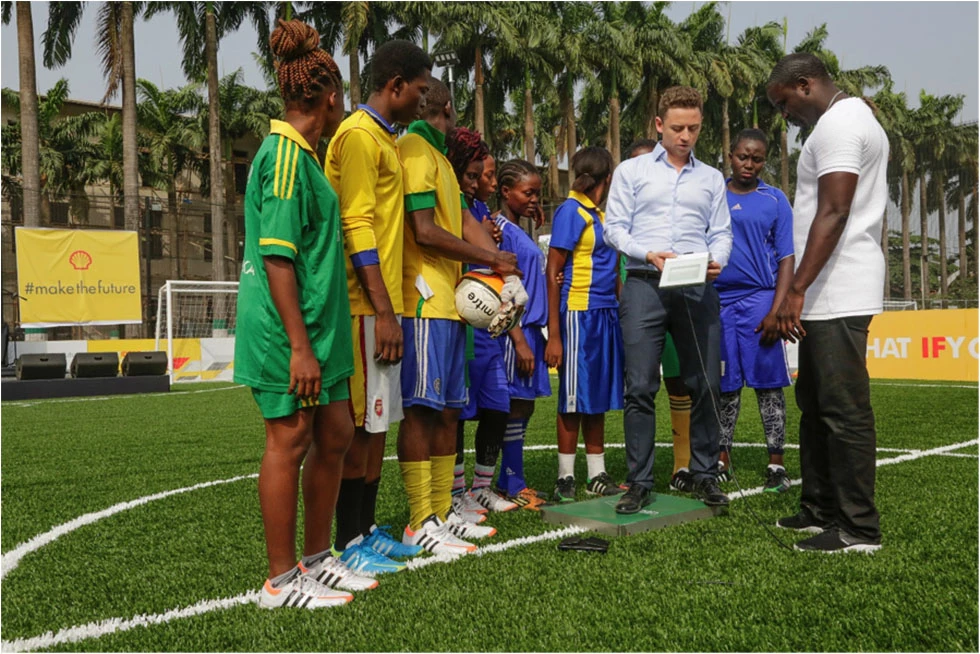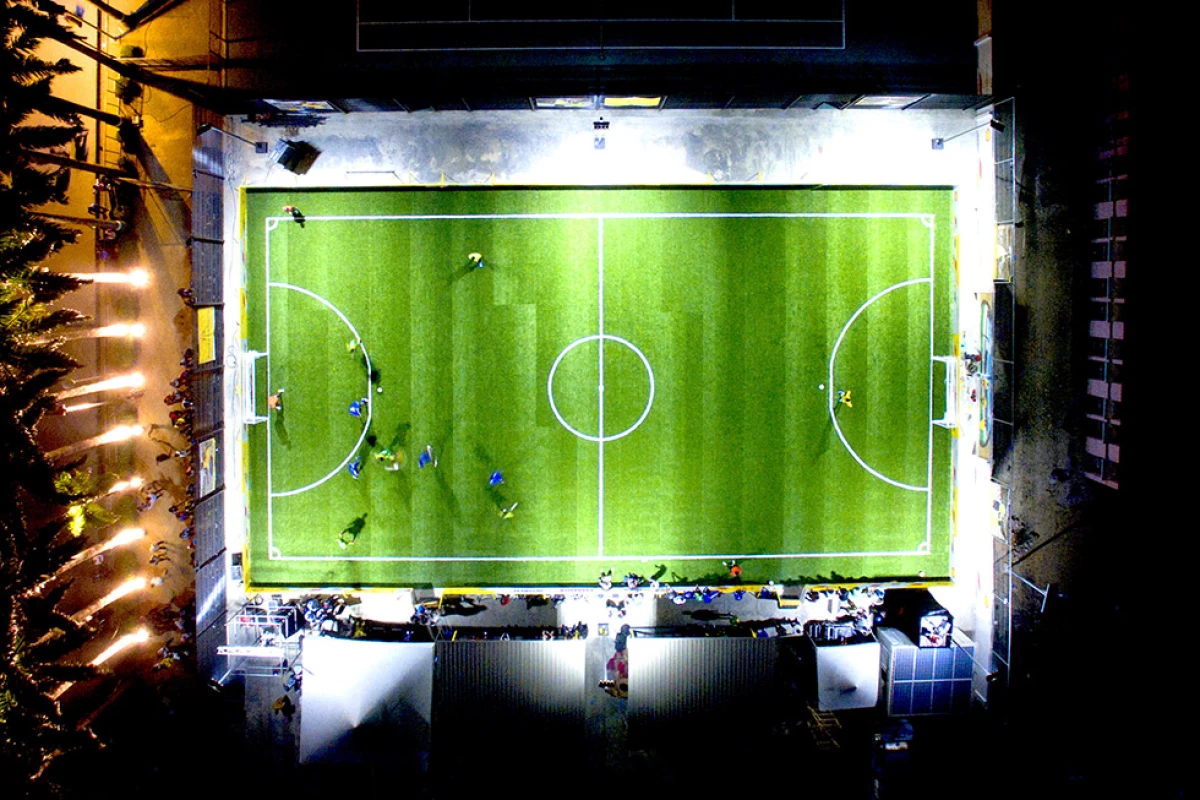A little over a year ago, Pavegen's kinetic energy-harvesting tiles were installed at a soccer pitch in Rio. The movement of players across the tiles is used to generate electricity and power the pitch's floodlights. Now, a second such pitch has been created in Lagos, Nigeria.
Pavegen's tiles afford a small degree of compression when they are stepped upon, the kinetic energy from which can be harnessed to generate electricity. In Lagos, the technology is being used in tandem with solar panels to ensure that the floodlights remain on even when the unreliable power grid isn't up to the task.
The project is headed up by Shell as part of its LiveWIRE program, through which Pavegen has been supported. Music star Akon, whose own company Akon Lighting Africa develops solar-powered lighting for Africa, also partnered on the project.
"New, reliable and smarter energy solutions play a major role in driving human progress in Africa," says Akon. "Projects like this innovative football pitch draw attention to the major opportunity that Nigeria as well as the whole of Africa have if we look to better harness new technologies and the continent's abundant renewable energy resources."

The pitch itself is located at the Federal College of Education in an area that was "pitch black at night." Around 100 Pavegen tiles were laid below the pitch surface. The kinetic energy generated from these is then stored and combined with power generated by the accompanying solar panels.
In this way, it is possible to power the floodlights so that students at the college can play soccer at night. The project has the added benefit of having created a well-lit and, therefore, safe community space.
In the video below, Akon provides an insight into the project.





